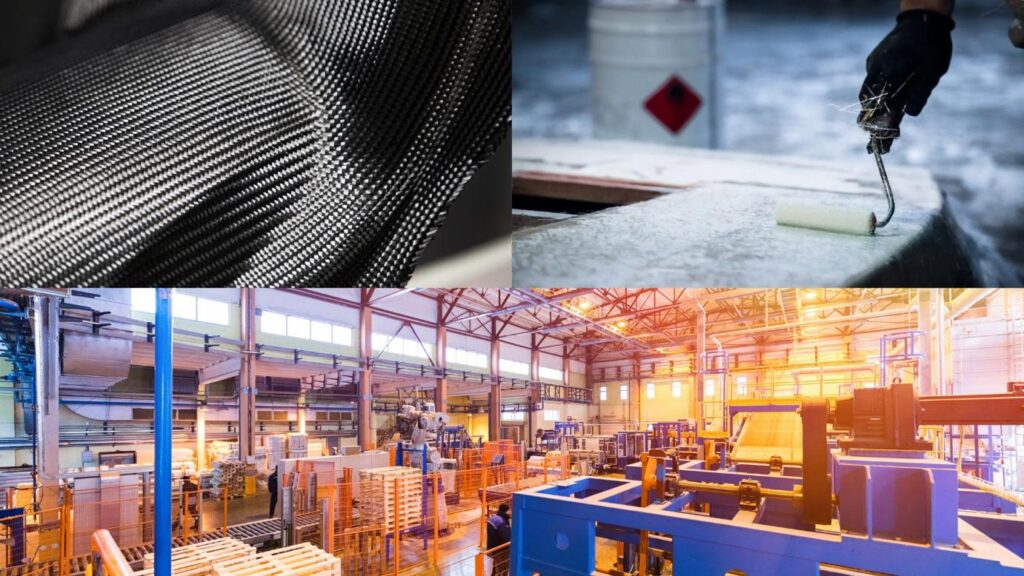
The Australian mining industry is a significant contributor to the country’s economy, providing valuable resources for both domestic and international markets. As the industry continues to evolve, the adoption of composite materials is becoming increasingly important in addressing the challenges of efficiency, sustainability, and safety. This article will explore the current landscape of composite materials in the Australian mining industry, examining the benefits, challenges, and opportunities for implementing these advanced materials in mining operations.
II. The Growing Adoption of Composite Materials in the Australian Mining Industry
Composite materials, which are made from two or more distinct materials with different physical or chemical properties, have been gaining traction in various industries due to their unique combination of strength, durability, and lightweight properties. In the mining industry, these materials offer numerous advantages, such as improved equipment performance, reduced maintenance costs, and enhanced safety measures.
The Australian mining industry has been at the forefront of adopting composite materials in various applications, ranging from structural reinforcement to equipment manufacturing and corrosion resistance. The use of composites in mining operations has been driven by the need to improve efficiency, reduce environmental impact, and enhance worker safety.
III. Benefits of Using Composites in the Mining Industry
The adoption of composite materials in the Australian mining industry has been driven by several key benefits, including:
- Improved equipment performance: Composite materials offer a high strength-to-weight ratio, making them ideal for use in mining equipment. This can lead to increased productivity, as lighter equipment can be more easily transported and maneuvered.
- Reduced maintenance costs: Composites are resistant to corrosion and wear, which can significantly reduce maintenance costs and downtime in mining operations.
- Enhanced safety measures: The use of composite materials can improve worker safety by providing better fire resistance, chemical stability, and structural reinforcement.
- Environmental sustainability: Composites can help reduce the environmental impact of mining operations by minimizing waste and promoting more efficient use of resources.
IV. Challenges and Opportunities for Implementing Composites in Mining Operations
Despite the numerous benefits of using composite materials in the mining industry, there are several challenges and opportunities that must be addressed to ensure successful implementation:
- Cost considerations: The initial investment in composite materials can be higher than traditional materials, which may deter some mining companies from adopting them. However, the long-term savings in maintenance costs and improved efficiency can offset the initial investment.
- Regulatory compliance: The use of composite materials in mining operations must comply with relevant regulations and standards, which can be complex and time-consuming to navigate. Ensuring compliance with these requirements is essential for the successful implementation of composites in the industry.
- Workforce training: The adoption of composite materials in mining operations may require additional training for workers to ensure they are familiar with the properties and handling of these materials. Investing in workforce training can help facilitate the successful integration of composites into mining operations.
- Research and development: Continued research and development in the field of composite materials is essential for driving innovation and addressing the unique challenges faced by the mining industry. Collaborative efforts between industry, academia, and government can help accelerate the development of new composite materials and applications.
V. Case Studies: Successful Applications of Composites in the Australian Mining Industry
Several Australian mining companies have successfully implemented composite materials in their operations, demonstrating the potential for widespread adoption across the industry. Some examples include:
- A major Australian mining company has replaced traditional steel wear plates in their ore processing equipment with composite wear liners, resulting in a significant reduction in maintenance costs and downtime.
- Another mining company has utilized composite materials for structural reinforcement in underground mines, improving worker safety and reducing the risk of cave-ins.
- A leading Australian mining equipment manufacturer has developed a range of composite components for mining machinery, including lightweight conveyor rollers and idlers, which have been proven to reduce energy consumption and improve equipment performance.
The current landscape of composite materials in the Australian mining industry is characterized by growing adoption, driven by the need for more efficient and sustainable solutions. While challenges remain in terms of implementation, cost, and regulatory compliance, the numerous benefits of using composites in mining operations present significant opportunities for the industry. Continued research and development, collaboration between stakeholders, and investment in workforce training will be essential for realizing the full potential of composite materials in the Australian mining industry.








